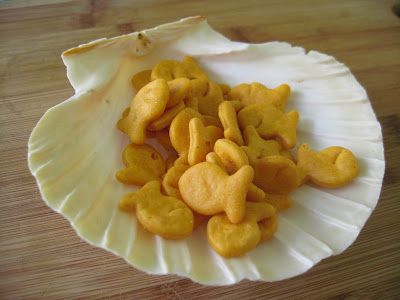While it is no longer on the current liturgical calendar, the feast of St. Peter in Chains was a feast day commemorated on August 1st to recall St. Peter's miraculous release from imprisonment and the dedication in the 4th century of the church Pietro in Vincoli - St. Peter in Chains in Rome. Last year I posted this St. Peter in Chains Feast Day Bread recipe as an idea to commemorate the feast.
This year I found a quote from St. Alphonsus Liguori whose feast is also on August 1. He wrote
in his sermon "On the Love of Christ":
Since God knew that man is enticed by favours, he wished to
bind him to his love by means of his gifts: “I want to catch men with the
snares, those chains of love in which they allow themselves to be
entrapped, so that they will love me”.
So another "link" to making chain related feast day foods for
August 1.
Onion Chain Links - Fried Onion Rings
1 onion, cut into ¼ inch slices
1 egg
1 t. baking powder
1 ¼ c. flour
1 t. salt
1 c. Panko bread crumbs
1 c. milk
oil for deep frying
1 egg
1 t. baking powder
1 ¼ c. flour
1 t. salt
1 c. Panko bread crumbs
1 c. milk
oil for deep frying
Heat oil to 350 degrees. Separate the ¼ inch slices of onion into separate rings. Mix egg and milk, whisking until combined. Combine flour, salt and baking powder in another bowl. Dip onion rings in egg mixture, then in flour mixture. Dip the flour-coated onion rings back into egg-milk mixture a second time. Place on a wire rack to let excess egg-milk mixture drain. Place dipped onion rings into Panko bread crumbs and coat completely. Drop in hot oil and cook 1 minute per side until golden brown color. Place on a paper towel to drain excess oil.
Sprinkle onion rings with salt to taste.
Serve either as individual links or cut the links so they open and link together several onion rings for a chain of onion rings. Serve with ranch dressing or spicy dipping sauce.










